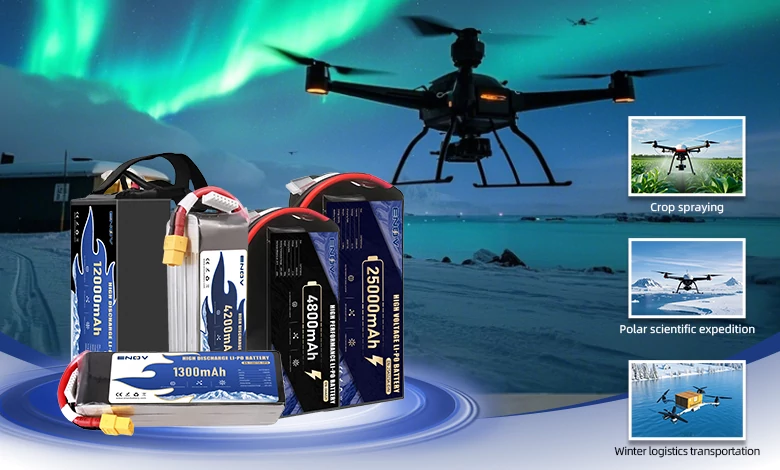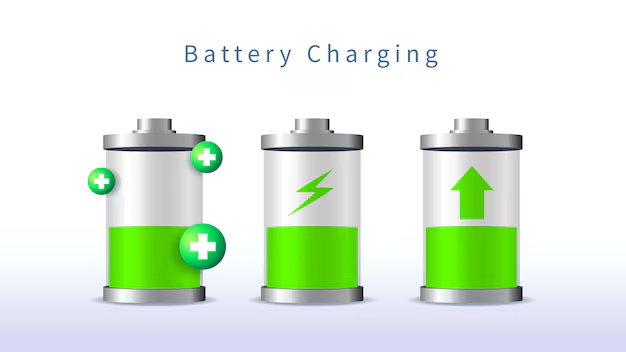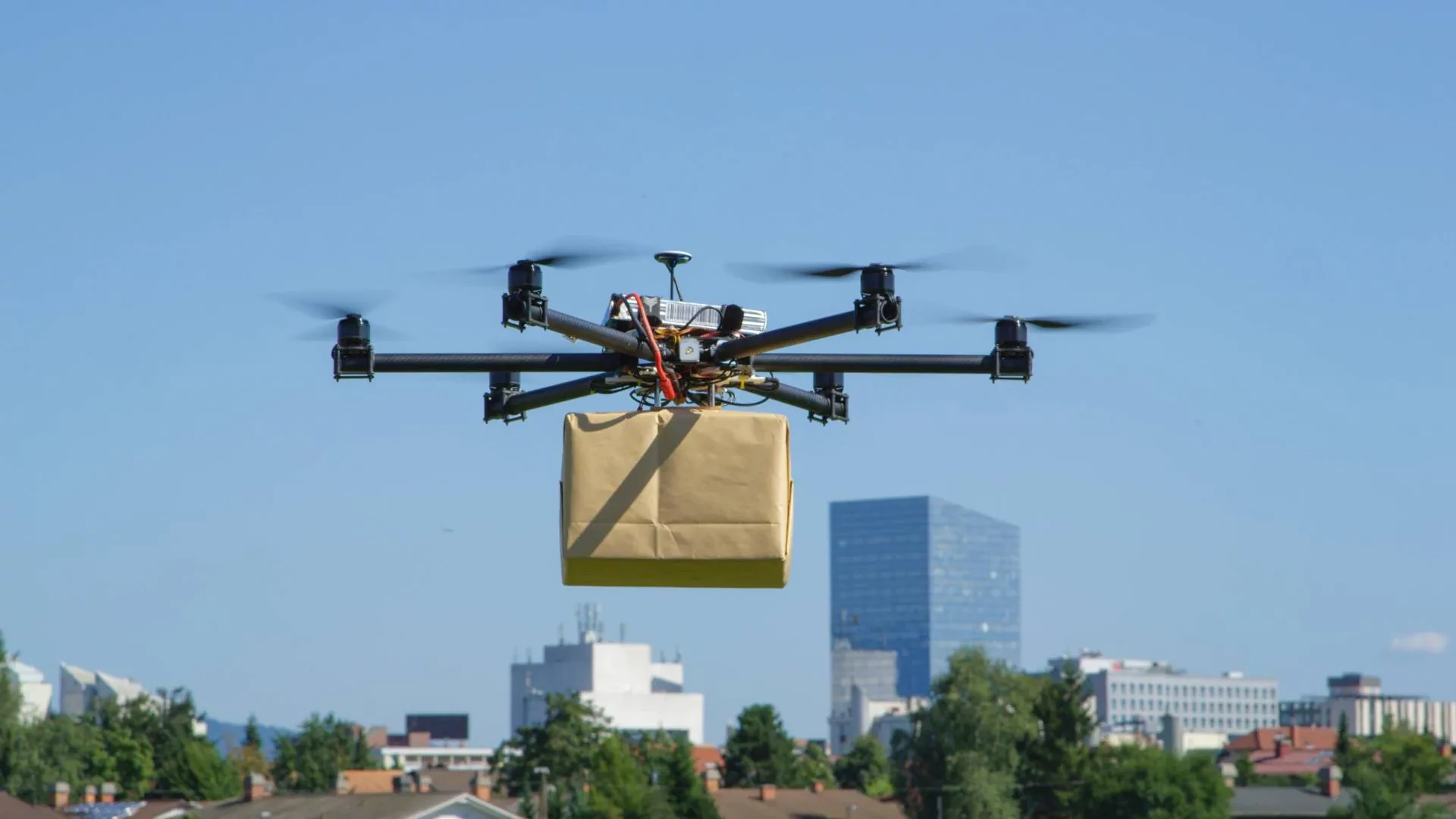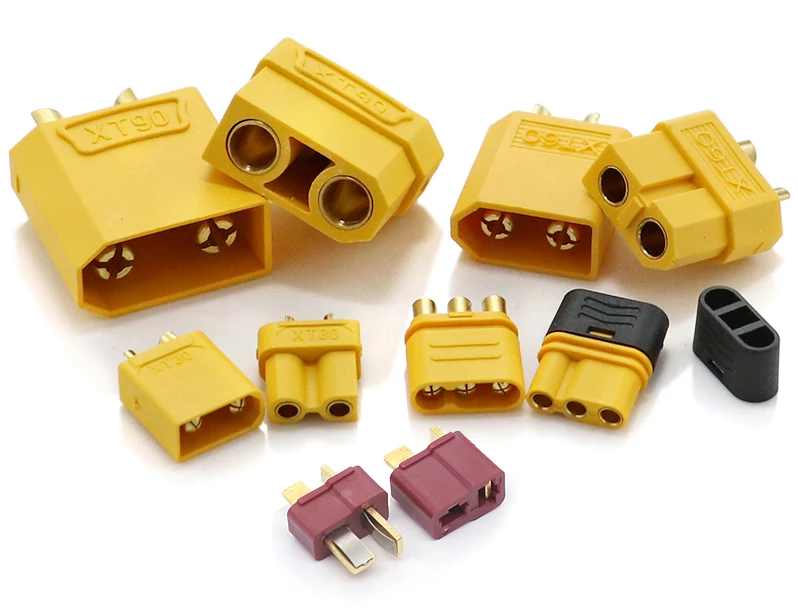Comprehensive Analysis of UAV Battery Charging Rate

ENOV High-Energy drone batteries power industrial and commercial drones. Delivering 220–320 Wh/kg energy density, they enable long flight times (30+ mins) and support fast charging (2C). Perfect for aerial photography, surveillance, and delivery drones.
1. Basic Understanding of Charging Rate
(1) Core Definition and Expression Method
Charging rate is a key indicator for measuring the charging speed of UAV batteries, and it is usually expressed in “C” (charging rate). A 1C rate means the battery can be fully charged within 1 hour; by extension, a 2C rate indicates a full charge in 30 minutes, and a 3C rate in 20 minutes. Its calculation logic is directly related to the battery capacity. For example, for a battery with a capacity of 5000mAh, the charging current corresponding to 1C is 5A, and that for 3C is 15A.
To calculate the charging current, the following formula based on the relationship between charging rate (C-rate) and battery capacity (mAh or Ah) can be used:
Charging Current (A) = Charging Rate (C) × Battery Capacity (Ah)
(2) Intuitive Analogy for Understanding
The charging rate can be analogous to the “refueling speed” of a car. A regular gas station’s fuel nozzle dispenses 10 liters of fuel per minute, while a fast – refueling station can reach 20 liters per minute. The latter enables the car to be refueled more quickly, but this is only possible if the car’s fuel tank and refueling system support it; otherwise, problems such as fuel leakage may occur. Similarly, when charging a UAV battery, a higher charging rate can shorten the charging time, but the battery itself must have the corresponding capacity to withstand it.
(3) Relevance and Value to UAVs
The charging rate directly affects the operational efficiency of UAVs. A higher charging rate results in a shorter time required to fully charge the battery, which reduces the idle waiting time of the UAV, allowing it to be quickly deployed for operational tasks such as aerial photography, inspection, and logistics. This is particularly significant in high – frequency operation scenarios.
2. Key Factors Affecting Charging Rate
(1) Battery's Own Properties
• Battery Type: Batteries with different chemical systems have significant differences in charging rates. Lithium – polymer batteries (LiPo) are the mainstream choice for consumer – grade UAVs and support a high charging rate of 1C – 5C. Lithium – ion batteries (Li – ion) have a high energy density but a relatively low charging rate, usually ranging from 0.5C to 1C, and are mostly used in long – endurance industrial UAVs. Lithium iron phosphate batteries (LiFePO₄) have outstanding safety performance, but their charging rate is even lower, only 0.5C – 1C.
• Battery Capacity: The larger the battery capacity, the more energy needs to be replenished during charging, and thus the longer the charging time. For example, a small 1000mAh battery may be fully charged within 30 – 60 minutes, while a larger 5000mAh battery may take several hours.
• Battery Internal Resistance and Cell Quality: Internal resistance is similar to the “diameter of an oil pipe”. The smaller the internal resistance, the smoother the flow of charging current, and the better it can support a high charging rate. Cell quality is like the “pressure resistance of a fuel tank”; the better the cell quality, the stronger the ability to withstand high – current charging. If the internal resistance is large or the cell quality is poor, forced high – rate charging will damage the battery.
• Battery Health and Remaining Power: The performance of an aged battery degrades, and the charging rate needs to be reduced to ensure safety. When the remaining power of the battery is low, the charging speed is relatively fast. However, when the power is close to full (80% – 100%), to protect the battery, the charging will switch to a constant voltage mode, and the speed will gradually slow down.
(2) External Equipment and Environment
• Charger Output Power: The power of the charger directly determines the charging speed; the higher the power, the higher the charging current it can support. Taking DJI UAVs as an example, the DJI Mavic 3 series uses a 240W desktop charger with a charging hub, and it takes about 51 minutes to charge one battery. If a 100W desktop charger is used instead, the time is extended to 80 minutes. When connected to the UAV body for charging at a maximum power of 65W, it takes approximately 115 minutes.
• Ambient Temperature: The optimal temperature range for charging is 20℃ – 25℃. When the temperature is lower than 10℃, the battery activity decreases, and the charging speed drops significantly. When the temperature exceeds 40℃, it may cause battery damage and even trigger a fire hazard.
• Battery Management System (BMS): The BMS equipped in smart batteries monitors the battery status in real – time. To ensure safety, it may limit the maximum charging current to avoid battery damage caused by overcurrent, overheating, and other issues.
3. Classification of Charging Rates and Actual Charging Time
(1) Classification of Common Charging Rates
• Slow Charging: With a charging rate below 0.5C, it is mainly used for battery maintenance or scenarios with extremely high safety requirements. Although the charging time is long, it causes the least damage to the battery.
• Standard Charging: With a rate usually of 1C, it is the mainstream choice that balances safety and efficiency. It can effectively extend the battery cycle life, and most UAV batteries are recommended to be charged at this rate.
• Fast Charging: With a rate ranging from 2C to 5C, it can greatly shorten the charging time and is suitable for emergency scenarios in high – frequency operations such as logistics and inspection. However, the battery must be clearly marked to support a high C – rate, and long – term use may accelerate battery degradation.
• High-end Fast Charging: Some experimental or high-end solid-state and semi-solid-state batteries have a maximum charging rate of up to 9C, aiming to achieve a full charge in 5-10 minutes. Currently, this technology has not been widely popularized.
(2) Examples of Actual Charging Time
Taking a common 5000mAh battery as an example:
1C Charging: Theoretically, it takes 1 hour to fully charge. In practice, the time will be slightly extended due to the need for voltage balancing at the end of charging.
2C Charging: Theoretically, it takes 30 minutes to fully charge. This requires both the battery and the charger to support a high rate, and it is also affected by the constant voltage mode at the end of charging.
High-rate Fast Charging: For example, if 5C charging is supported, theoretically, more than 80% of the battery can be charged in 12 minutes. Some dedicated batteries can even complete more than 80% of the charge in 9 minutes.
4. Charging Precautions and Recommended Practices
(1) Core Precautions
• Compatibility Check: Before using high – rate fast charging, confirm that the battery is clearly marked to support the corresponding C-rate (such as “5C Charging”) to avoid battery damage due to incompatibility.
• Equipment Selection Specifications: Be sure to use the original charger provided by the manufacturer or a certified charger that supports the manufacturer’s fast charging protocol. Non – original equipment may have safety risks of mismatched current and voltage.
• Temperature and Heat Dissipation Monitoring: Batteries tend to generate heat during fast charging. It is necessary to monitor the temperature in real – time. If overheating occurs (e.g., exceeding 40℃), charging should be stopped immediately to avoid safety accidents.
•Trade-off in Cycle Life: Long-term use of high-rate charging above 2C will accelerate the loss of battery cells and shorten the cycle life (for example, the original 500 – cycle life may be reduced to 300 cycles). A balance must be struck between operational efficiency and battery cost.
(2) Recommended Operating Methods
• Daily Use: Prioritize 1C standard charging. This ensures operational efficiency while maximizing battery protection and extending its service life.
• Emergency Scenarios: Only use fast charging that meets the requirements for a short time when the operation task is urgent. After charging is completed, put the battery into use immediately to avoid the battery being in a fully charged state for a long time.
• Long-term Storage: When the battery is idle, charge it to 50% – 60% of its capacity, store it in a cool and dry environment, and check the power regularly to avoid battery performance degradation caused by over – discharge or storage at full charge.
• Parameter Verification: Before charging, carefully refer to the UAV manufacturer’s specifications and the recommended charging rate on the battery package. For example, it takes about 1 hour and 22 minutes to charge a DJI Mini 2 battery with an 18W charger, about 1 hour and 36 minutes to charge a DJI Mavic 3 battery with a 65W charger, and 35 minutes to charge a DJI TB50 smart battery in fast charging mode, while it takes 90 minutes in normal mode.
Quick inquiry
Drop us a line, and we’ll get back to you within 24 hours.

Ariana Yuan
Digital Operations Manager
Website Planning|Marketing Project Management for Drone Batteries|Scheduled Content Refresh|SEO Optimization

Ariana Yuan
Digital Operations Manager
Website Planning|Marketing Project Management for Drone Batteries|Scheduled Content Refresh|SEO Optimization




